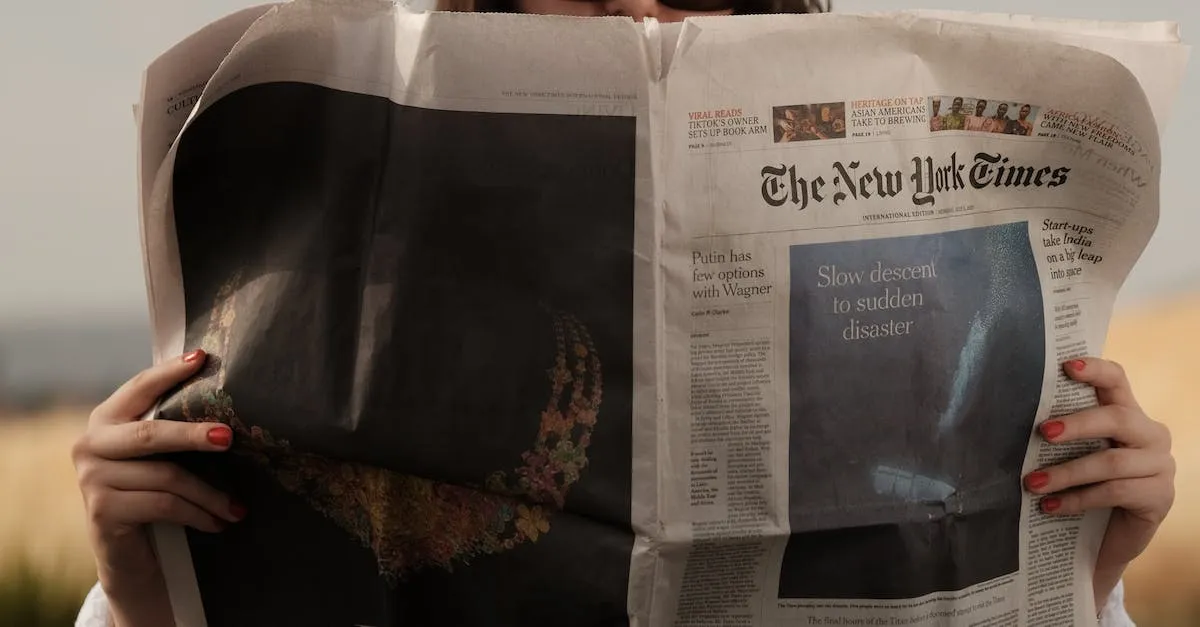Does Rupert Murdoch Own The New York Times?
With his control over several major media properties worldwide, Rupert Murdoch is a towering figure in the news industry. His ownership of prominent outlets like Fox News sometimes leads people to assume he may also own reputable stalwarts like The New York Times. But is this the case? If you’re short on time, here’s a quick answer to your question: No, Rupert Murdoch and his companies do not own The New York Times.
In this article, we’ll explore the actual ownership, management, and control of the NYT to clarify that it is not part of Murdoch’s media empire.
Ownership Structure of The New York Times
The Ochs-Sulzberger Family
The New York Times has a unique ownership structure that sets it apart from many other major newspapers. The newspaper has been owned and operated by the Ochs-Sulzberger family since 1896, when Adolph Ochs purchased it.
This family-controlled ownership structure has allowed the New York Times to maintain its independence and editorial integrity over the years.
Arthur Ochs Sulzberger Jr. served as the publisher of The New York Times from 1992 to 2017, and during his tenure, he continued the family’s commitment to quality journalism. In 2017, he passed the torch to his son, A.G. Sulzberger, who now serves as the publisher.
This multi-generational commitment to the newspaper’s values has helped it maintain its reputation as one of the most respected news organizations in the world.
Carlos Slim
While the Ochs-Sulzberger family has maintained majority control over The New York Times, there have been outside investors who have held a stake in the company. One notable investor was Carlos Slim, a Mexican billionaire and one of the richest people in the world.
In 2009, during a time when the newspaper industry was facing significant financial challenges, Carlos Slim invested $250 million in The New York Times Company. This investment helped the company weather the storm and provided much-needed stability during a turbulent period for the industry.
It’s important to note that while Carlos Slim held a significant stake in the company, he did not have any control over the newspaper’s editorial content. The Ochs-Sulzberger family maintained control over the company’s operations and decision-making processes.
Ultimately, the ownership structure of The New York Times has allowed it to maintain its independence and journalistic integrity. The commitment of the Ochs-Sulzberger family to quality journalism and the support of outside investors like Carlos Slim have played a crucial role in the newspaper’s continued success.
Rupert Murdoch’s Media Properties
Rupert Murdoch is a prominent figure in the media industry, known for his ownership of various media properties. While he does not own The New York Times, he has built a media empire through his companies News Corp and Fox Corporation.
News Corp and Fox Corporation
News Corp is a global media conglomerate founded by Rupert Murdoch in 1980. It is one of the largest media companies in the world, with holdings in print, digital, and broadcast media. News Corp owns several well-known publications, including The Wall Street Journal, The Sun, and The Times of London.
On the other hand, Fox Corporation is a separate entity that was formed when News Corporation was split into two companies in 2013. Fox Corporation focuses primarily on television broadcasting and owns the Fox Broadcasting Company, Fox News, and Fox Sports.
Major Holdings and Acquisitions
Rupert Murdoch’s media properties have expanded through major acquisitions and investments. One notable acquisition was the purchase of 21st Century Fox by The Walt Disney Company in 2019. This acquisition included various entertainment assets, such as 20th Century Fox Film Corporation and Fox Television Stations.
It’s important to note that while Rupert Murdoch has significant influence in the media industry, he does not own every media outlet. The New York Times, for example, is owned by The New York Times Company, which is publicly traded on the stock market.
For more information on Rupert Murdoch’s media properties, you can visit the official websites of News Corp (www.newscorp.com) and Fox Corporation (www.foxcorporation.com).
Editorial and Management Independence
When it comes to media ownership, the question of editorial and management independence often arises. In the case of The New York Times, it is important to understand the standards and practices that govern the newspaper’s content and the corporate oversight that ensures its integrity.
Standards and Practices
The New York Times prides itself on maintaining rigorous standards and practices that guide its journalism. These standards emphasize accuracy, fairness, and impartiality in reporting. The newspaper has a comprehensive set of guidelines that cover everything from fact-checking to conflict of interest.
Journalists at The New York Times are expected to adhere to these guidelines to ensure the credibility of their work.
These standards and practices are crucial in maintaining the editorial independence of The New York Times. Journalists have the freedom to pursue stories without interference from external influences, including owners or advertisers.
This independence allows The New York Times to provide a balanced and reliable source of news for its readers.
Corporate Oversight
While The New York Times upholds its editorial independence, it is not immune to corporate oversight. Like any other media organization, it has a board of directors that oversees its operations. The board consists of individuals who are responsible for making strategic decisions and ensuring the long-term sustainability of the newspaper.
However, it is important to note that ownership and editorial control are separate entities. The New York Times is owned by The New York Times Company, which is a publicly traded company. The company’s shareholders have the power to elect the board of directors, but they do not have direct control over the newspaper’s content or editorial decisions.
This separation between ownership and editorial control is essential in maintaining the independence of The New York Times. It allows the newspaper to operate without undue influence from its owners, ensuring that journalistic integrity remains at the forefront.
So, to answer the initial question, Rupert Murdoch does not own The New York Times. The newspaper remains an independent entity, guided by its own standards and practices, and overseen by its board of directors.
Conclusion
While Rupert Murdoch’s reach is extensive, The New York Times operates fully independently of his control or ownership. The NYT maintains editorial independence from major shareholders and corporate interests.








